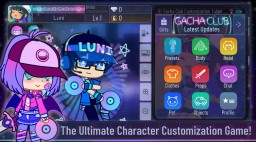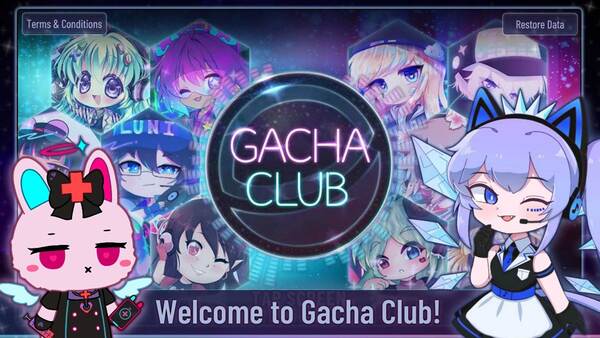Core Keeper: The Ultimate Exploration and Survival Adventure Below the Surface
In the vast realm of indie games, few titles manage to blend mystery, resource management, exploration, and combat as effortlessly as Core Keeper. Developed by Pugstorm and published by Fireshine Games, this pixel-art sandbox adventure game invites players into a procedurally generated underground world full of secrets, monsters, and endless possibilities. Since its early access release, Core Keeper has steadily expanded, giving players new biomes, bosses, and mechanics to master.
This comprehensive article explores the full experience of Core Keeper—from the early days of survival to the deep endgame challenges. Structured by the timeline of gameplay progression, it will guide you through every major milestone, include detailed pros and cons, and offer a final expert rating to help you evaluate the game as a whole. Along the way, we’ll use plenty of transitional words to ensure a smooth reading journey.
The Beginning: Awakening in the Underground
Every Core Keeper session begins with mystery. You awaken in a dark, damp cave with little more than your wits and a strange core pulsing nearby. The game wastes no time thrusting you into survival mode, encouraging exploration and experimentation.
Soon, you'll start punching dirt walls, scavenging mushrooms, and crafting basic tools. These early moments are quiet and methodical, giving you time to adjust to the controls and mechanics. Though you begin alone, the underground world is alive and waiting.
Gathering Resources: The First Steps in Progression
Once you settle in, mining becomes your primary activity. Copper is your first big goal—it allows you to craft better tools and armor. Gradually, you discover new ores like tin, iron, and scarlet, each unlocking new stations and mechanics.
As you collect materials, crafting opens up. A simple workbench eventually leads to anvils, cooking pots, electronics labs, and even automation tools. Core Keeper steadily reveals new layers of complexity, rewarding consistent exploration.
Moreover, each resource-rich biome introduces new visuals and challenges. The Dirt Biome is safe and simple, while the Clay Caves add danger and better ore. The progression feels rewarding and organic.
Establishing Your Base: A Sanctuary Below
At this point, you’ll want to carve out a permanent base. This becomes your hub for crafting, cooking, storing loot, and farming. Lighting is crucial—torches and lanterns prevent you from stumbling into enemies.
Farming adds another enjoyable layer. You can grow Heart Berries, Glow Tulips, and Bomb Peppers to create stat-boosting meals. Cooking these ingredients is surprisingly satisfying, with dozens of recipes offering buffs for combat, mining, or speed.
Furthermore, this is when your home starts feeling alive. You can decorate, organize rooms, and eventually attract NPCs who provide trading and quests. Your base becomes a functional and aesthetic representation of your progress.
Exploring Biomes: From Clay Caves to Sunken Sea
As you dig deeper, new biomes bring fresh threats and resources. The Clay Caves, the Forgotten Ruins, the Azeos Wilderness, and the Sunken Sea all offer unique layouts, enemy types, and materials.
Enemies vary wildly—from slimes and larvae to giant bosses like Glurch the Abominous Mass and Azeos the Sky Titan. Each biome increases the stakes, pushing you to upgrade gear, refine your combat skills, and make more strategic choices.
In addition, traversal becomes more complex. You’ll need boats for the Sunken Sea, electronics for teleporters, and even gadgets like drills to automate mining. The underground world becomes a true labyrinth of opportunity.
Boss Battles and Milestones: Confronting Titans
Core Keeper's bosses are not just optional—they are milestones that shape your progression. Defeating Glurch, Ghorm, and Hive Mother early on is essential to power up the mysterious core and unlock new systems.
Later, massive biome-specific bosses like Azeos and Ivy offer epic challenges requiring teamwork or advanced solo strategies. These fights reward rare loot, crafting materials, and access to late-game content.
Bosses also force you to adapt. Some demand speed, others require environmental awareness or ranged combat. This constant adaptation ensures the gameplay remains dynamic and fresh.
Multiplayer Experience: Digging Together
One of Core Keeper's most beloved features is its seamless multiplayer. You can invite friends into your world, divide tasks, and coordinate large projects. Multiplayer introduces a new layer of strategy, especially in boss fights and resource management.
Working together, players can automate production, speed up mining, and build sprawling underground cities. The social element transforms the gameplay, turning an isolated survival game into a shared creative journey.
Even so, balancing multiplayer can be tricky. Resource hoarding, uneven progression, and differing playstyles may arise. Communication is key to making co-op enjoyable and efficient.
Advanced Crafting and Automation: Late-Game Depth
As you progress beyond the core trio of bosses, new crafting stations and tech emerge. Electricity becomes crucial—you’ll wire generators to doors, teleporters, drills, and lights. This introduces puzzle-solving elements to base design.
Moreover, automation lets you mine, smelt, and transport resources hands-free. Drills and conveyor belts bring an industrial layer that longtime survival-crafting fans will appreciate. It becomes less about survival and more about optimization.
By this stage, your underground empire runs like a machine. Your efforts pay off with rare items, optimized food production, and rapid progression through new content.
Seasonal Events and Updates: Evolving World
One major reason Core Keeper has stayed relevant is its regular updates. Seasonal events bring limited-time decorations, new challenges, and even exclusive items. From Halloween to Spring Festivals, there's always something new to discover.
Major content updates have added new biomes, bosses, NPCs, and systems. For example, the Desert of Beginnings update introduced heat-based mechanics and dangerous new mobs, keeping even veteran players on their toes.
The developers are actively involved with the community, frequently gathering feedback and implementing requested features. As a result, the game feels alive and constantly evolving.
Community and Mods: Extending the Experience
Beyond the base game, the Core Keeper community has developed mods and shared world seeds that enhance replayability. While official mod support is limited, the Steam Workshop features quality-of-life tools and customization options.
From visual enhancements to inventory tweaks and progression mods, the potential for personalization is high. Furthermore, community Discords and forums are great places to find collaborators, share builds, or ask for tips.
Although mods can occasionally break with updates, their potential to expand Core Keeper is massive. Future integration of full modding tools would elevate the game even further.
Endgame Goals: What Lies Beyond
Eventually, you’ll reach the endgame—fully automated, armed with legendary gear, and having defeated the major bosses. So what’s left?
Endgame goals vary by player. You might dig massive tunnels connecting every biome, optimize your farms to perfection, or challenge yourself with hardcore combat runs. Building megastructures or tackling 100% completion are popular community goals.
With each update, new possibilities emerge, and thus, the endgame continually evolves. The feeling of never quite being “done” is one of Core Keeper’s greatest strengths.
Pros and Cons of Core Keeper
Pros:
-
Deep progression system that rewards exploration
-
Charming pixel art style with a moody atmosphere
-
Satisfying crafting, farming, and automation mechanics
-
Rich multiplayer experience with seamless drop-in/out
-
Regular updates and responsive development team
Cons:
-
Early-game pacing may feel slow for some players
-
Navigation can become confusing in sprawling worlds
-
Occasional performance issues on lower-end systems
-
Lack of in-game tutorials for more complex systems
-
Endgame content can feel limited without updates






























